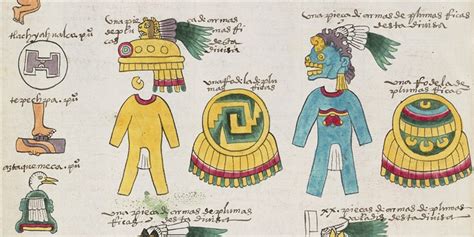Introduction
The Aztec Empire, a formidable civilization that ruled over central Mexico from the 14th to the 16th centuries, employed a sophisticated tribute system to consolidate its power and maintain economic stability. This system played a pivotal role in shaping Aztec society and interactions with neighboring regions, offering valuable insights into the complex dynamics of pre-Columbian Mesoamerica.

Origins and Structure of the Tribute System
The Aztec tribute system emerged from the Mexica’s conquest of neighboring city-states and provinces. As the empire expanded, the Aztecs imposed tribute obligations on conquered territories, ensuring a steady flow of resources and labor to support their centralized government.
The tribute system was highly organized and meticulously administered. The empire was divided into provinces, each responsible for contributing specific goods and services. Tribute was collected by Aztec officials known as calpixque, who visited each province regularly to assess and gather the required contributions.
Types and Quantities of Tribute
The Aztecs demanded a wide range of tribute, including:
- Agricultural products: Maize, beans, squash, cotton, tobacco, and various fruits and vegetables.
- Textiles: Fine fabrics, cloaks, and garments.
- Precious metals: Gold, silver, and copper.
- Luxury goods: Jade, turquoise, amber, and feathers.
- Human labor: Artisans, farmers, and warriors.
The quantities of tribute varied depending on the size and resources of each province. According to historical estimates, the Aztec capital, Tenochtitlan, received an estimated 6,000 tons of maize, 2,000 tons of beans, and massive quantities of other goods annually.
Impact on Aztec Society and Economy
The tribute system had a profound impact on Aztec society and economy. It provided the empire with a steady stream of resources, enabling it to maintain a large standing army, support a vast population, and finance ambitious construction projects such as the Great Temple of Tenochtitlan.
The tribute also stimulated economic exchange and specialization. Conquered provinces were encouraged to focus on producing specific goods, leading to increased trade and interregional integration within the empire.
Consequences for Conquered Provinces
While the tribute system sustained the Aztec Empire, it imposed significant burdens on conquered provinces. Heavy taxation and forced labor could strain resources and limit local autonomy. Some provinces resisted Aztec domination, leading to periodic revolts and uprisings.
However, it’s important to note that the tribute system also brought benefits to conquered regions. Aztec rule provided relative peace and stability, access to trade networks, and the introduction of new technologies and agricultural practices.
Decline and Fall
The Aztec tribute system played a crucial role in sustaining the empire for over a century. However, it ultimately contributed to its downfall. The constant demands for tribute, coupled with the oppressive nature of Aztec rule, alienated many of their subjects.
The arrival of the Spanish conquistadors in the early 16th century exploited these grievances. By allying with Aztec enemies who resented the tribute burden, the Spaniards weakened the empire and eventually conquered it in 1521 CE.
Significance in World History
The Aztec tribute system stands as a fascinating example of a pre-Columbian state-building mechanism. Its sophistication, scale, and impact provide valuable insights into the political, economic, and social dynamics of the Aztec Empire and offer a glimpse into the complexities of pre-Columbian Mesoamerica.
Conclusion
The Aztec tribute system was an essential pillar of the Aztec Empire, shaping its economy, society, and interactions with neighboring regions. By understanding its origins, structure, types of tribute, and impact, historians and scholars can gain a deeper appreciation for the complex dynamics of this iconic civilization and its legacy in world history.
